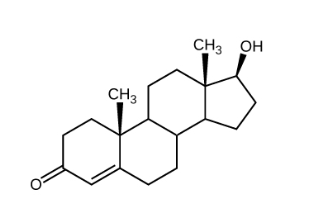Testosterone is categorized as which of the following types of hormones?
A. Androgen
B. Aldosterone
C. Progestin
D. Estrogen
For those aiming to excel in their ATI TEAS test and secure admission into their desired nursing program, ExamGates offers an invaluable resource. Our platform features practice questions meticulously crafted by tutors who have previously aced the exam themselves. With ExamGates, you can access content that is 100% relevant to the test, accompanied by vivid images and illustrations. Additionally, our platform provides comprehensive explanations for both correct and incorrect answers, empowering you to fully grasp the material and optimize your study efforts. Take the first step towards your nursing aspirations with ExamGates today.
Testosterone is a sex hormone that regulates the sex drive, bone mass, production of red blood cells and sperm. It is a steroid of the androstane class, which contains a ketone on the third position and hydroxyl group at position seventeen as in the diagram below.

Therefore, the Correct Answer is A.
More Questions
Question 1:
The hypothalamus is functionally and anatomically connected to the posterior pituitary lobe by a bridge of ________
A. blood vessels
B. nerve axons
C. cartilage
D. bone
The Correct Answer is B.Question 2:
Which of the following glands synthesizes antidiuretic hormone?
A. Thymus
B. Pineal gland
C. Pancreas
D. Hypothalamus
The Correct Answer is D.The hypothalamus communicates with the posterior pituitary, which is an extension of the brain. It is the hypothalamus that produces the ADH hormones.
Question 3:
Testosterone is categorized as which of the following types of hormones?
A. Androgen
B. Aldosterone
C. Progestin
D. Estrogen
The Correct Answer is A.Testosterone is a sex hormone that regulates the sex drive, bone mass, production of red blood cells and sperm. It is a steroid of the androstane class, which contains a ketone on the third position and hydroxyl group at position seventeen as in the diagram below.

Question 4:
Which of the following physiological responses is caused by the release of anti-diuretic hormone?
A. Increase in the concentration of calcium in the glomerulus
B. Increase in water reabsorption in the collecting duct
C. Decrease in the concentration of calcium in the glomerulus
D. Decrease in water reabsorption in the collecting duct
The Correct Answer is B.The ADH causes the channels in the collecting duct to open, which leads to water being reabsorbed back into the blood. A high level of ADH causes the kidney to release urine since more water is absorbed back into the body.